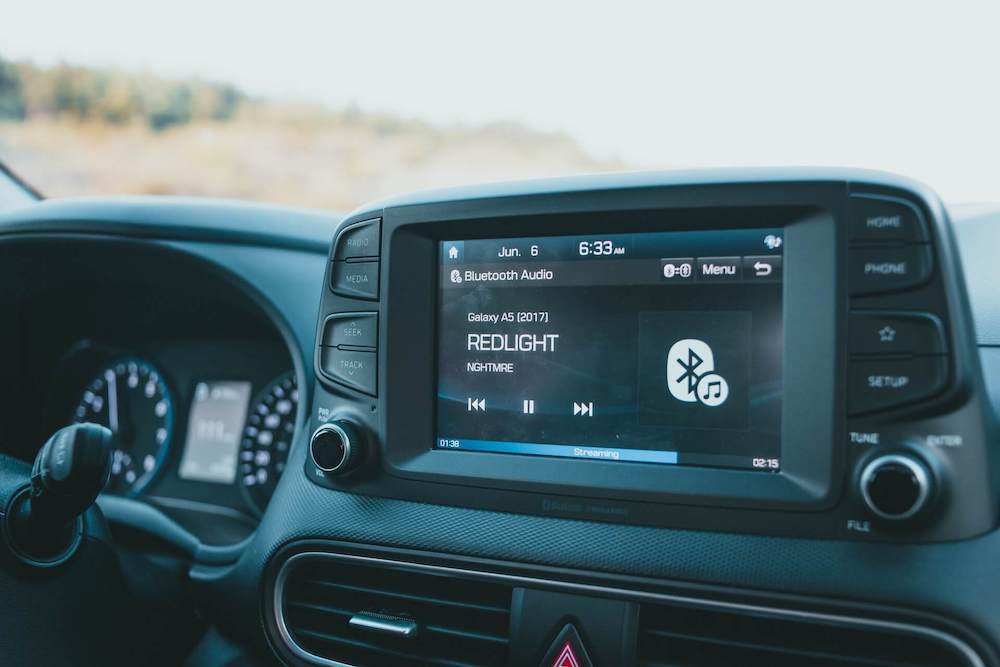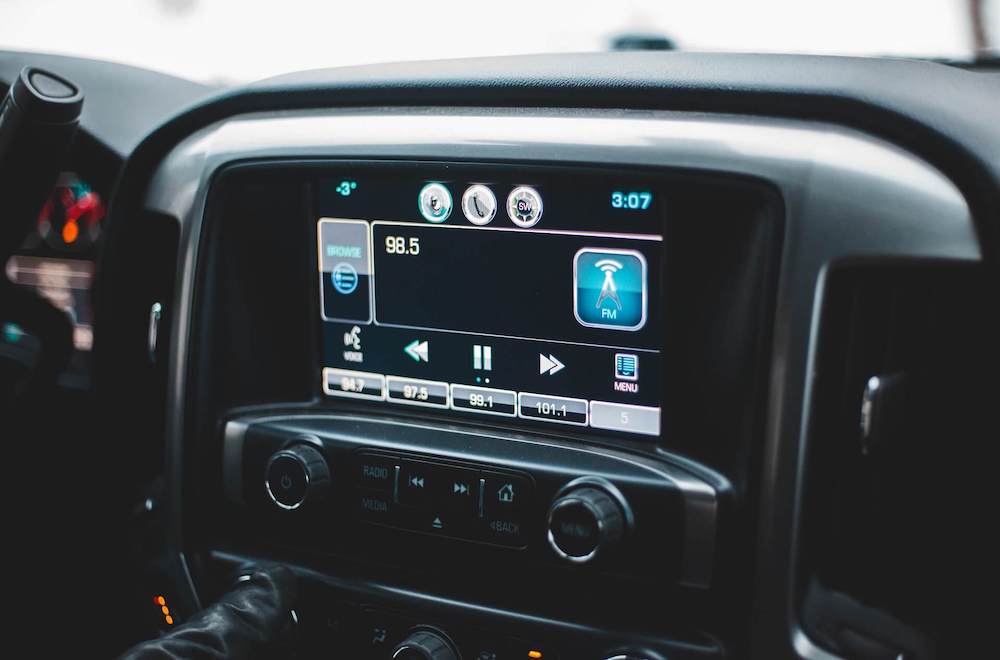Your driving experience can be substantially improved by having high-quality car audio because it offers superb sound and entertainment alternatives. To get the best audio quality, it’s crucial to make sure your car radio is in working order. In this post, we’ll show you how to properly test a car stereo to make sure it works and has the best sound possible.

Contents
- 1 The Value of an Auto Stereo
- 2 Different Car Stereo Types
- 3 The sound quality being tested
- 4 Testing the radio’s capabilities
- 5 Connecting a Power Supply to an Automobile Radio
- 6 How to Fix a Bad Car Stereo
- 7 Tips for Troubleshooting Common Performance Issues with Car Stereos
- 8 Regular Wire Testing Can Prevent Car Stereo Issues
The Value of an Auto Stereo
A car radio is more than just a music-playing system for your automobile. It functions as a center for communication, navigation, and entertainment. Immersive music experiences, hands-free calling, cutting-edge networking options, and even amenities like navigation systems may all be found in a high-quality car radio.
Different Car Stereo Types
Single-DIN and double-DIN head units, which vary in size and capabilities, are two different types of car stereos. While some automobile stereos feature touchscreens, others have real-world buttons and knobs. It is essential to know what kind of car radio you have in order to test and use its functions properly.
Read More: Best Boss Car Stereo Reviews 2023
The sound quality being tested
Follow these procedures to assess the sound quality of your car stereo:
Making EQ Settings Changes
- Commence by playing your preferred tune.
- Play around with the equalization (EQ) settings to determine the best harmony between the bass, treble, and midrange frequencies.
- Adjustments should be made to reflect your individual tastes and the music you listen to most frequently.
Trying out the bass
- Begin by playing a song with heavy bass.
- Pay attention to the low-frequency range for depth and clarity.
- Watch out that the bass doesn’t overshadow the voice and other elements.
Verifying Clarity
Play a song that features a range of singers and musical instruments. - Pay close attention to how distinct each sound is.
- Verify that the audio is reproduced by the car stereo clearly and without muddiness or distortion.
Testing the radio’s capabilities
Follow these procedures to make sure your car stereo’s radio feature is functioning properly:
Stations for Searching and Storing
- Switch between radio stations.
- Check out the manual tweaking and scanning features.
- Keep your preferred stations in a convenient location.
Signal Strength Checking - Change your environment by relocating to urban and rural places.
- Verify that the car stereo continues to receive a strong signal.
- Check to see if it has automatic signal amplification for the greatest audio quality.
A CD/DVD player test
Follow these procedures to test your car stereo’s CD/DVD player:
Disc loading and ejection
- Place a CD or DVD in the device.
- Verify that the disc is recognized and plays smoothly on the car stereo.
- Without a hitch, eject the disc.
Playback Quality Inspection
Play a variety of CDs or DVDs.
- During playback, pay attention to any skipping, stuttering, or audio abnormalities.
- Ascertain that the automobile stereo offers a fluid audio experience.
Testing Bluetooth and auxiliary connections
The steps below should be followed to test a car stereo’s auxiliary and Bluetooth connections:
Relating to External Devices
- Pair your smartphone or another audio device using Bluetooth or the auxiliary input.
- Listen to music or other audio on the linked device.
- Verify that the sound is reproduced by the car radio without any breaks or quality loss.
Checking the Bluetooth connection
- Bluetooth-connect your smartphone to the car stereo.
To try the hands-free calling feature, place and receive calls. - Check to see if the car stereo can wirelessly play music from your phone.
Trying Out More Features
Car stereos might provide extra functionality in addition to the basic ones. A few of these can be tested as follows:
SD Card compatibility with USB
- Put a USB stick or SD card with audio files in.
- Verify that the car radio can read and play the files without any problems.
- Access various tracks by browsing folders.
Testing the Navigation System
- Enter a destination into the navigation system on the car stereo.
- Check to see if it offers precise directions and updates in real-time.
- Examine supplementary features such as voice guiding and places of interest.
Solutions and Advice
If you experience problems with your automobile stereo, take into account the following advice:
Typical Car Stereo Problems
- Inspect the speaker connections and wiring if the sound is subpar.
- Check the fuses and wire connections if the car stereo won’t turn on.
- Verify that the antenna is attached properly if the radio reception is poor.
Optimal Performance Advice
- In order to ensure proper playback quality, clean the CD/DVD lens frequently.
- For the finest sound reproduction, use high-quality audio files.
- Update the firmware on your car audio often to take advantage of enhancements and issue fixes.
Read More: How To Install A New Car Stereo Head Unit?

Connecting a Power Supply to an Automobile Radio
the procedures below to connect a power supply to a car radio:
To avoid any electrical accidents, disconnect the car battery’s negative terminal.
On the car radio harness, locate the power wires. The red wire for power, the yellow wire for memory, and the black wire for ground are the three main wires that are often present.
Connect the red wire from the car radio harness to a 12V power source, typically the accessory wire for the ignition switch or the fuse box in the vehicle.
The radio will maintain memory settings even after the car is shut off if the yellow wire from the radio harness is connected to a steady 12V power source.
A suitable ground point on the automobile, such as a metal chassis bolt or a specialized ground wire connection, should be connected to the black wire from the car radio harness.
The negative terminal of the car battery should be reconnected.
How to Fix a Bad Car Stereo
Here are some measures you can take to resolve a problem with your car stereo:
Make that the power connection is secure and that the power lines are receiving the proper voltage.
Examine the fuse: Verify and, if necessary, replace the fuse connected to the circuit for the car stereo.
Check the connections to the speakers: Make that the speaker wires are securely attached and are not frayed or broken.
Try various audio sources: To ascertain whether the issue is with a particular source or the entire system, try playing audio from a variety of sources (such as the radio, CD, and Bluetooth).
Seek for any error messages: Pay attention to any fault or warning lights displayed on the stereo display, and refer to the user handbook for assistance with troubleshooting.
Tips for Troubleshooting Common Performance Issues with Car Stereos
Here are some suggestions for troubleshooting typical automobile radio performance problems:
no sound Make sure the speaker connections are tight by checking them. Make sure the stereo’s volume and balance settings are set appropriately by adjusting them.
bad audio quality Make sure the equalizer settings are set properly and that the audio source is of high quality. Look for any speaker or wiring problems that could degrade the sound.
problems with CD playback Use a CD lens cleaner to clean the CD and the CD player’s lens. Make that the CD is compatible with the player and that it is properly inserted.
Check to see if the Bluetooth capability is turned on in both the car audio and your device if you’re experiencing Bluetooth connectivity issues. Try disconnecting any paired devices first, then reconnecting. If available, update the car stereo’s firmware.
Regular Wire Testing Can Prevent Car Stereo Issues
Car radio problems can be avoided with routine wire testing. Take these actions:
Examine the wiring harness on a regular basis for any indications of deterioration, such as fraying or exposed wires. Replace or fix any broken wires right away.
Utilizing a multimeter to test the electrical connections will ensure adequate voltage and continuity. This aids in finding any connections that might be faulty or loose and affect how well the car stereo works.
To ensure efficient signal transmission, clean the contacts of the wiring harness and connectors with electrical contact cleaner to remove any debris or corrosion.
It is essential to test a car stereo to guarantee a pleasurable listening experience while driving. You may assess your car stereo’s sound quality, radio functioning, CD/DVD player, auxiliary and Bluetooth connections, and other functions by following the instructions in this article. Make the most of your car stereo’s capabilities and increase your driving experience with routine testing and maintenance.
It is strongly advised to unplug the negative terminal of the automobile battery before working with the power source for the radio. This guard against any potential electrical mishaps or system harm.
An “Error” warning on the car stereo could mean that there is an issue with the audio source or the stereo is broken. For detailed troubleshooting instructions, consult the user handbook or, if necessary, seek expert assistance.
Wire testing should be done on your car audio at least once a year or if you notice performance issues. Regular testing enables the early detection and resolution of any wiring-related issues.
Yes, it is normal practice to connect automobile radios using aftermarket wire harnesses. They offer a standardized connection between the automobile’s wiring and the radio, simplifying installation and lowering the possibility of compromising the original wiring of the car.
People with some technical know-how and expertise can troubleshoot and repair automobile stereos. However, it is advised to visit a qualified car audio specialist for an accurate diagnostic and repair if you are doubtful or run into complicated problems.
